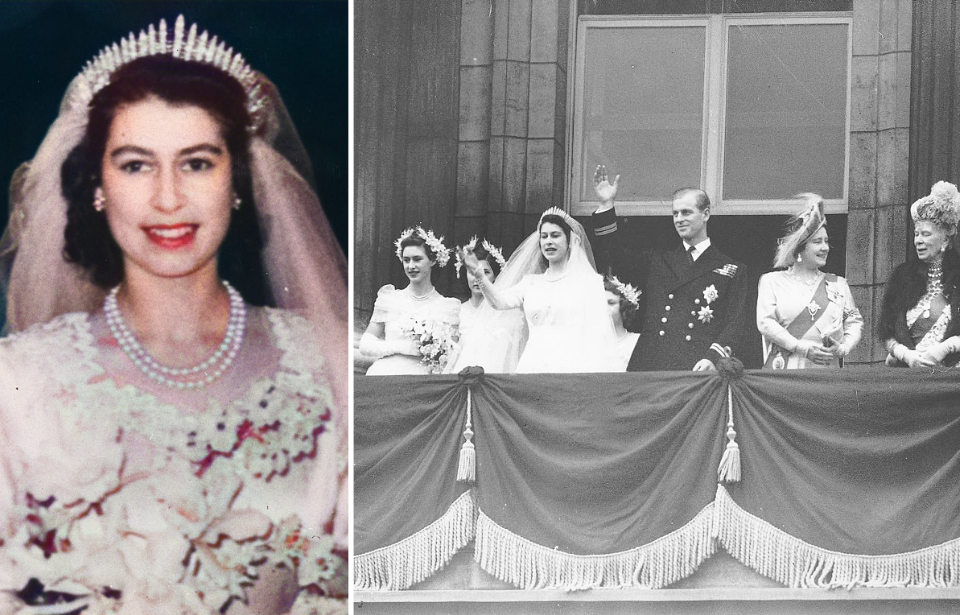Fans of the British Royal family are aware of Queen Elizabeth II’s service with the Auxiliary Territorial Service during World War II, but did you know that the conflict impacted her wedding some two years after it ended? As Britain tried to rebuild, common amenities were still rationed, including the cloth used to make her wedding dress.
The dress was purchased with ration coupons
In order to “afford” her wedding dress, Queen Elizabeth II was given 200 extra ration coupons by the British government. She also received hundreds of coupons from brides-to-be across the United Kingdom. She returned them, as it was illegal to give the coupons away in the first place, and wrote a thank you note to each woman.
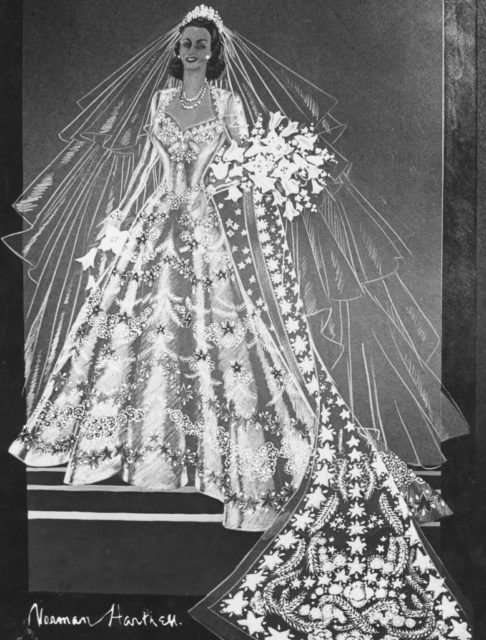
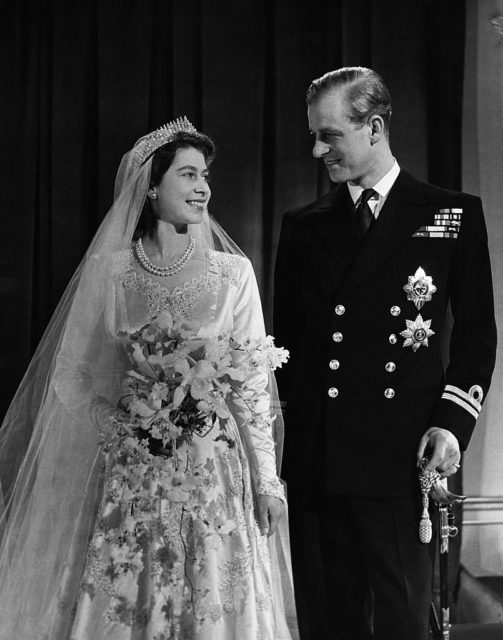
The design for the dress was approved a mere three months before the wedding. Designed by Norman Hartnell, it was a Chinese silk fitted gown with a sweetheart neckline, tailored bodice and long, fitted sleeves. The bodice and full skirts were encrusted with pearl and diamanté jasmine blossoms, ears of wheat and star flowers, and Hartnell included a secret lucky clover on the inside of the skirt, so Elizabeth’s left hand “could rest upon it during the ceremony.”
It had a 13-foot-long train inspired by Botticelli‘s 1482 painting Primavera, bedazzled with crystals and 10,000 seed pearls imported from the United States. The cloth was chosen by the Queen Mother, who desired an “unusually rich, lustrous stiff satin which was made at Lullingstone Castle.”
The dress was paired with a diamond tiara and white satin sandals, with silver buckles studded with small pearls.
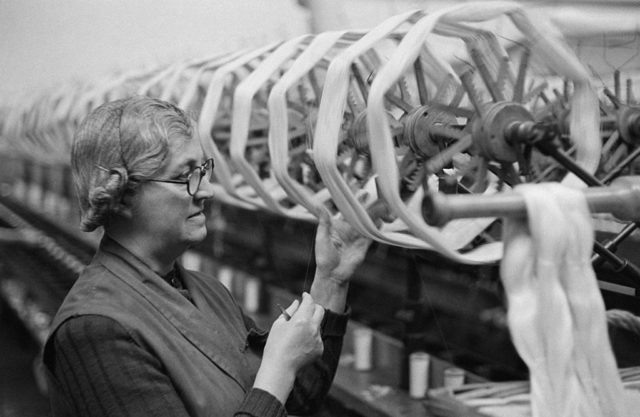
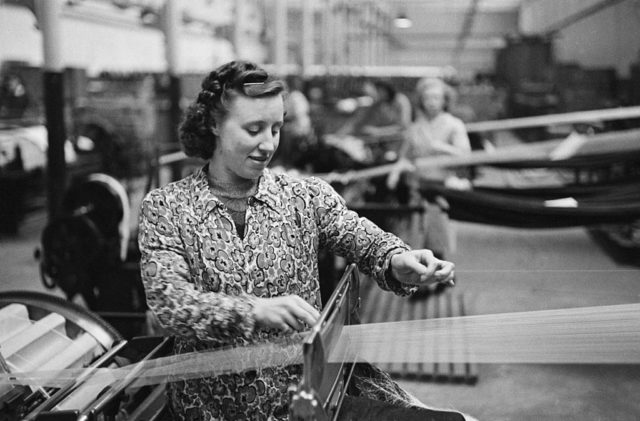
The dress was stitched by 350 women over the course of nearly two months. It was later recreated for the Netflix series The Crown, costing the production £30,000.
Royal wedded bliss
The big day occurred at Westminster Abbey on November 20, 1947. It was the first great celebration of the post-war era, with the Royal Collection Trust saying Elizabeth’s gown and its spring-like theme symbolized “rebirth and growth” in Britain.
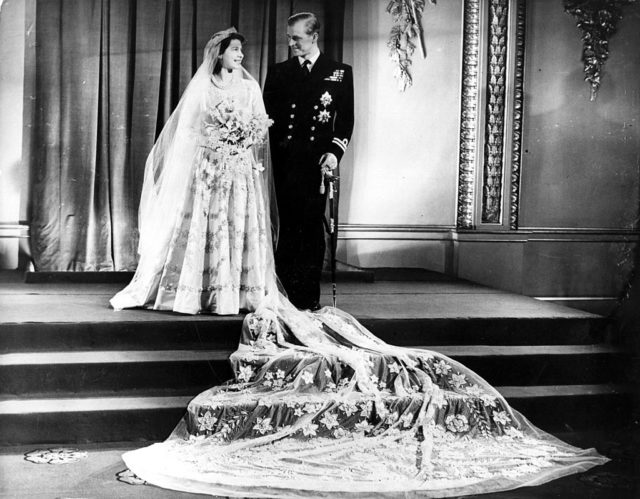
Elizabeth was flanked by eight bridesmaids, while Philip’s best man was the Marquess of Milford Haven. They were brought to the church in large carriage processions, but not before a potential issue arose. While Elizabeth was getting ready for the ceremony, her crown broke, prompting a royal jeweler to make an emergency repair.
Walking down the aisle, Elizabeth carried a bouquet made by the Worshipful Company of Gardeners. It featured myrtle from the bouquet of Queen Victoria‘s eldest daughter, as well as odontoglossum, cattleya and cypripedium orchids.
The ceremony was recorded and broadcast to 200 million people worldwide by BBC Radio. Following their nuptials, Elizabeth and Philip traveled to Buckingham Palace, where they waved to the large crowd below its balcony.
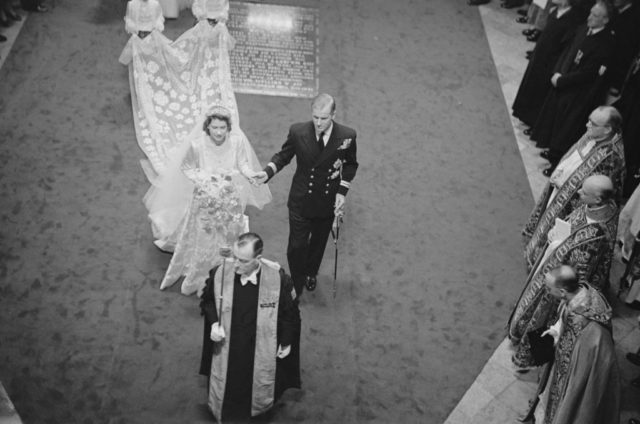
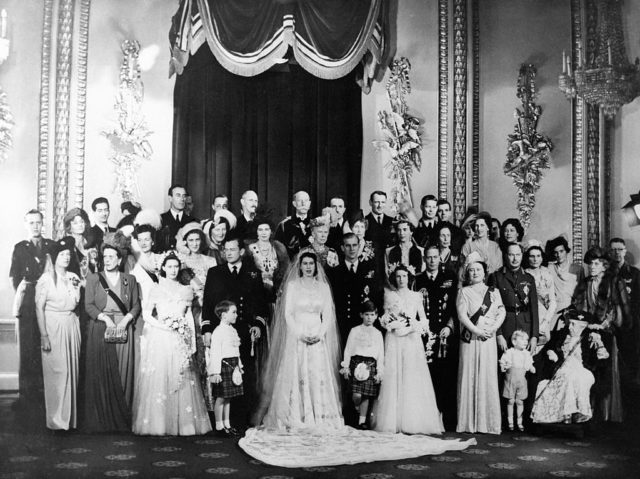
More from us: Glamorous Photos of History’s Most Famous and Iconic Wedding Gowns
Now you know the backstory of how Queen Elizabeth II obtained her gorgeous wedding gown. It’s just one of the many magical things to happen within her and Philip’s more than 70-year marriage.
